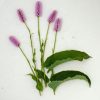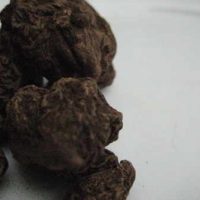Bistort Root (Persicaria bistorta) is an herbaceous flowering plant found throughout Europe.
the plant is also known by a large variety of names such as Adderwort, Dragonwort, Easter Giant, Easter Ledger, Easter magiant, Gentle Dock, Great Bistort, Osterick, Oysterloit, Passion Dock, Patience Dock (this name is also used for Rumex patientia), Patient Dock, Pink Pokers, Pudding Grass, Pudding Dock, Red Legs, Snakeweed, Twice-Writhen, and Water Ledges.
The Latin name bistorta refers to the twisted appearance of the root. The plant was used once to make a bitter pudding in Lent from a combination of the plant’s leaves, oatmeal, egg and other herbs. It is the principal ingredient of dock pudding.
Uses of Bistort:-
Traditional uses of bistort in herbal medicine are varied. In Shakespeare’s day, the juice of the plant was served as a remedy for nasal polyps. The rhizome of bistort, boiled in wine, was used for diarrheoa and dysentery. The same decoction reportedly checked heavy menstrual bleeding, stopped vomiting, and healed mouth and throat inflammations.
It also had a reputation as a mouthwash that would fasten loose teeth. A common thread unites most of these uses-namely, bistort’s high tannin content, which makes it astringent and therefore effective in checking bleeding and diarrhoea. Because the rhizomes are starchy, they served as famine food, roasted, boiled in soup, or ground to make flour. Young bistort leaves may be cooked and eaten like spinach.
One of the most strongly astringent of all herbs, it is used to contract tissues and staunch blood flow. It makes a valuable mouthwash and gargle for treating spongy gums, canker sores, and sore throats, and is also useful as a wash for small burns and wounds, a douche for excessive vaginal discharge, and an ointment for haemorrhoids and anal fissures.
Internally, it may be taken to treat peptic ulcers, ulcerative colitis, and conditions such as dysentery and irritable bowel syndrome that give rise to diarrheoa. Bistort is occasionally used in cases of urinary problems such as cystitis and for upper respiratory congestion.








